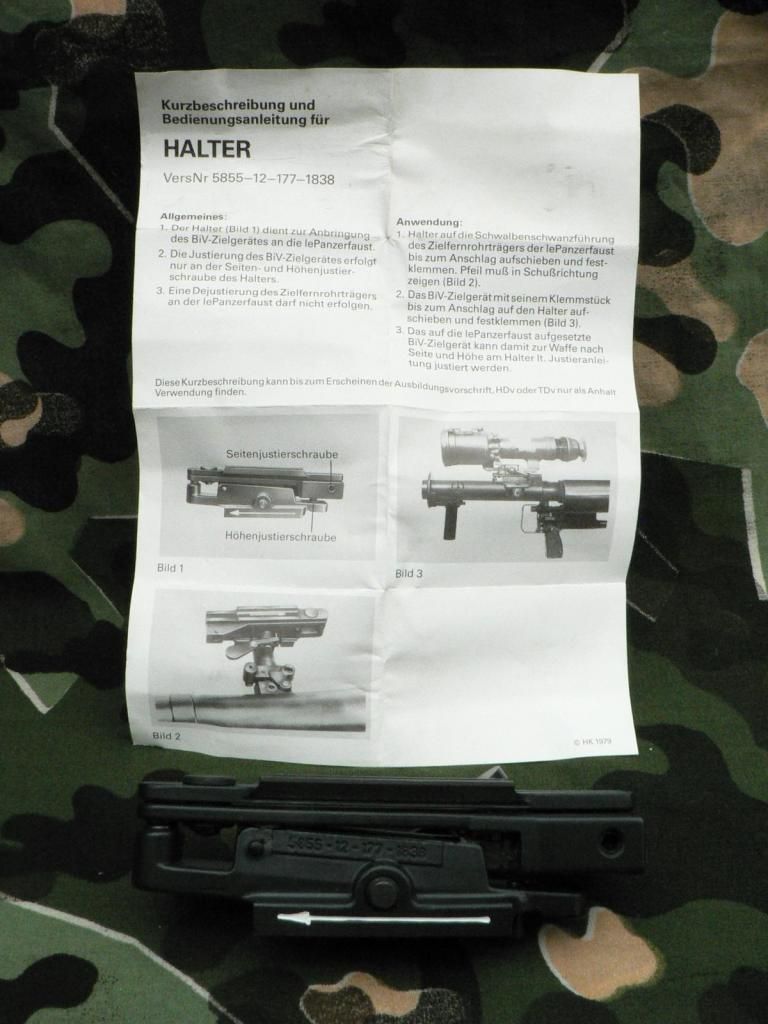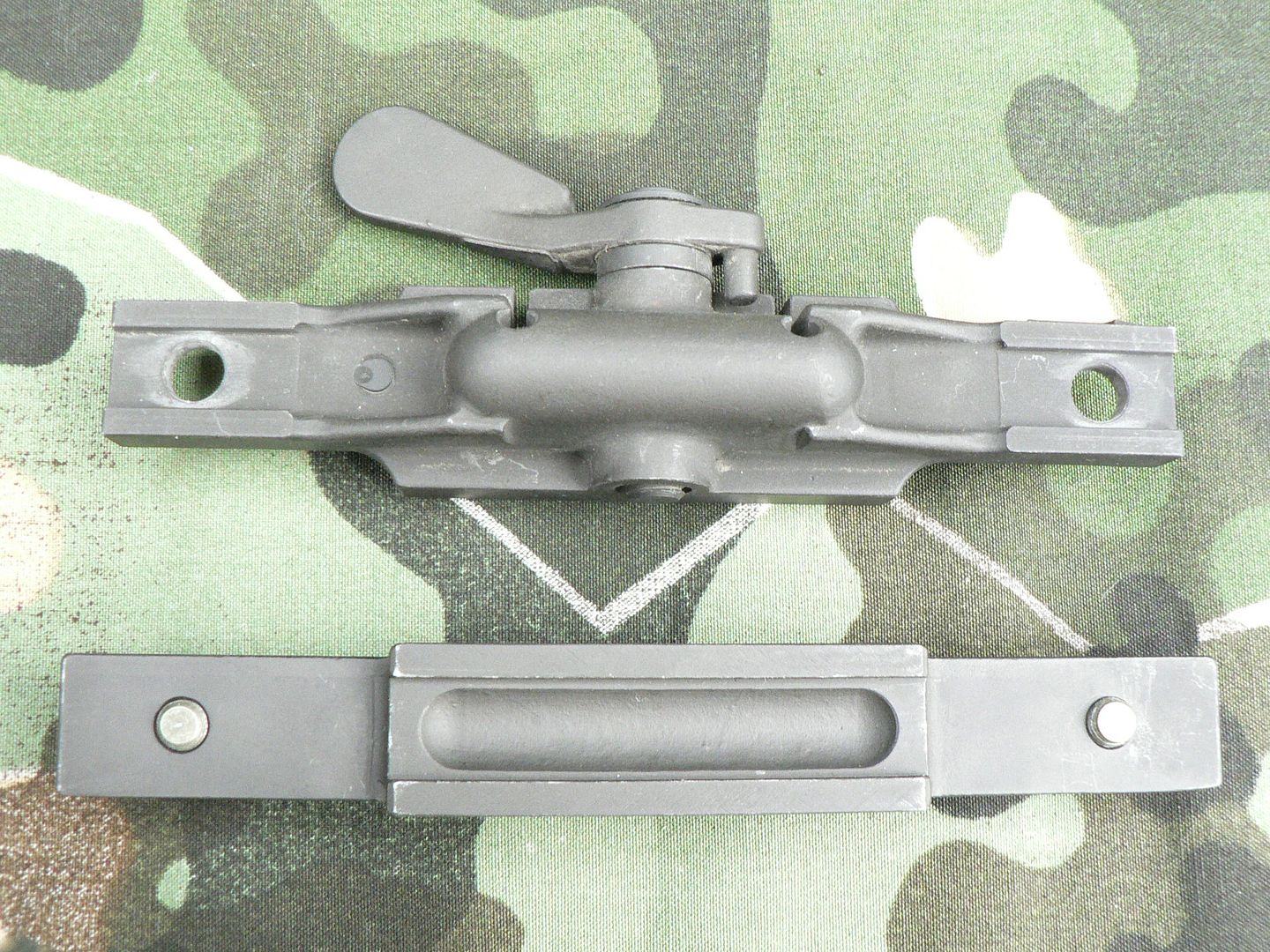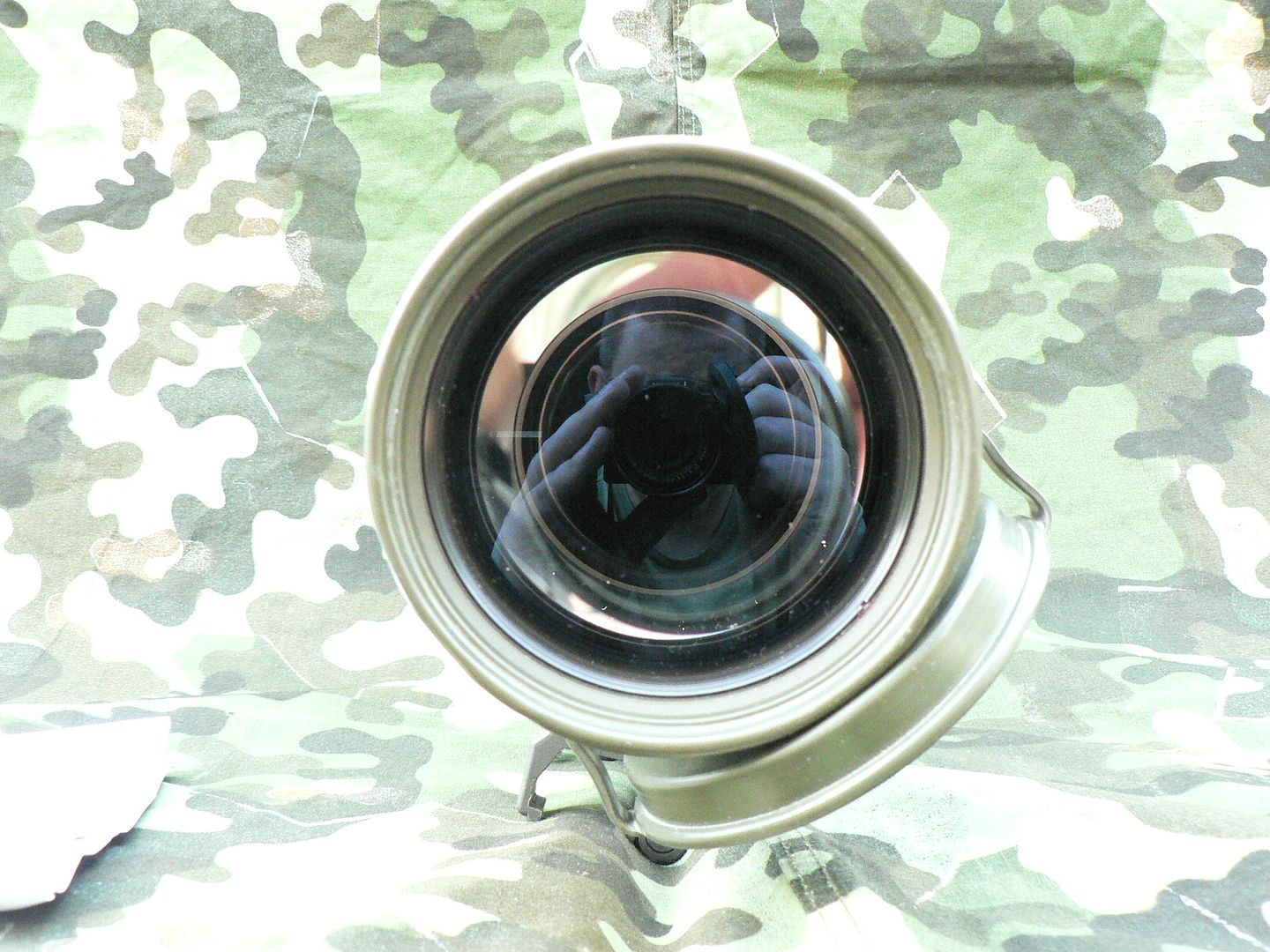Combloc
Stop Negassing me!!!!!
I've decided to do another of my long and dry "in detail" posts so be prepared to be bored out of your skull. This time it's on the Fero Z51 NV scope and, as usual, it's copyright (2013) so please don't use my text or photos without permission. These scopes showed up in some numbers on the surplus market in 2011 for a reasonable price (IIRC, I paid under 450 for mine shipped) and were available for a while. I think that they are still available in a few places but prices are rising steadily and these will soon be relegated to collector rather than useful tool status. And that's too bad because they were built to use and use hard, not sit tucked away in a closet and only be handled with care for a show and tell session. Even though their availability has passed its zenith, I still see questions about them from time to time on forums that I visit and so I decided to post some detailed pictures for folks who will want to know about these old clunkers in the future when they simply aren't available any longer. It will take me a few posts over a few nights in order to get this done but get it done I will so let's jump into it. The logical place to start is the case. It's made of green fiberglass with aluminum hardware and it's big and clunky but it's also extremely tough! Here's the top of the lid with it's identifying information painted on instead of being a decal like my older Eltro B8-V:

Rear and bottom:


And sides:
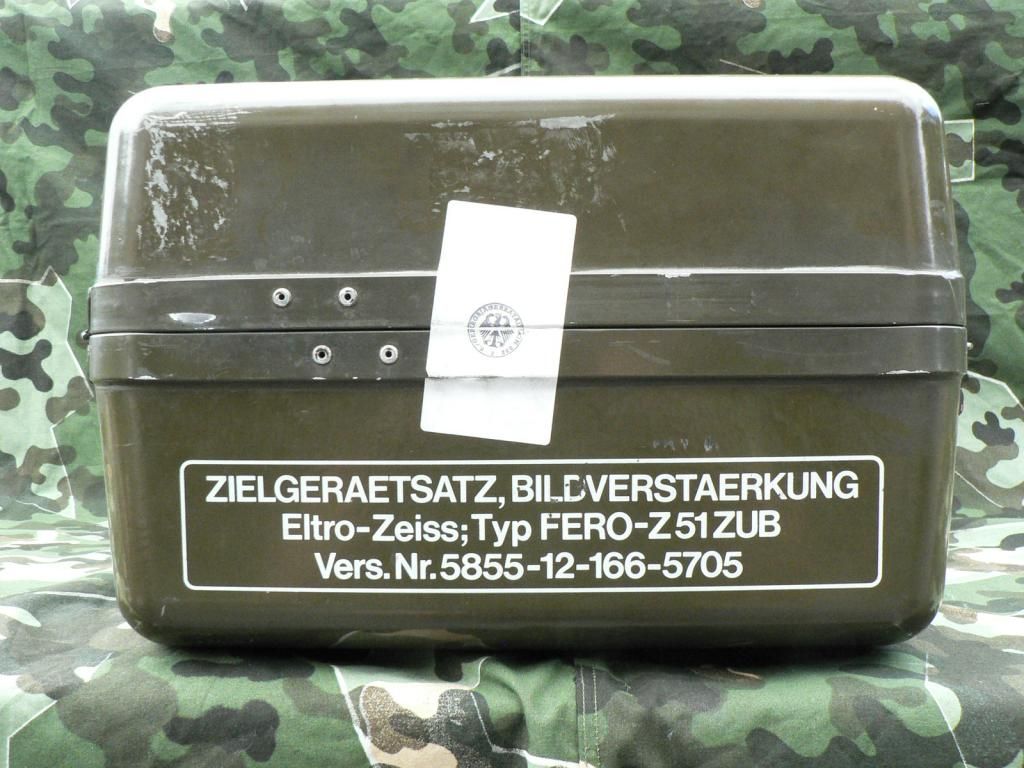

Notice the number "11378" on the box. This was printed on paper and then taped on. This same number is stamped on the body of the scope but I have no idea what the small " (9) " means. Also not that both sides have what appears to be a seal which has of course been broken. Here's a close-up of the stamp on one of those seals:

This stamp identifies this unit as having been assigned to Infantry Battalion 232 of the 23rd Mountain infantry Brigade based in Berchtesgaden. Neato!
Here's the latch side of the case. I stacked an older Eltro B8-V unit (the predecessor to the Z51) on top of the one being presented here in order to show that the latches are different but otherwise the cases are nearly identical.

You can see where there used to be a label above the handle that is now missing and there is a small red wire twisted around the handle. I have no idea what it is but it was on there when I got it and it will be on there when it leaves me. You can also see what I think is a pressure relief valve but I don't really know if that's what it is or how it works if it is!
Here are a few close-ups of a latch. They are ingenious little devils made by "Camloc" and are pressure adjustable by screwing the grabber part in or out. The latches on the older case are non-adjustable.



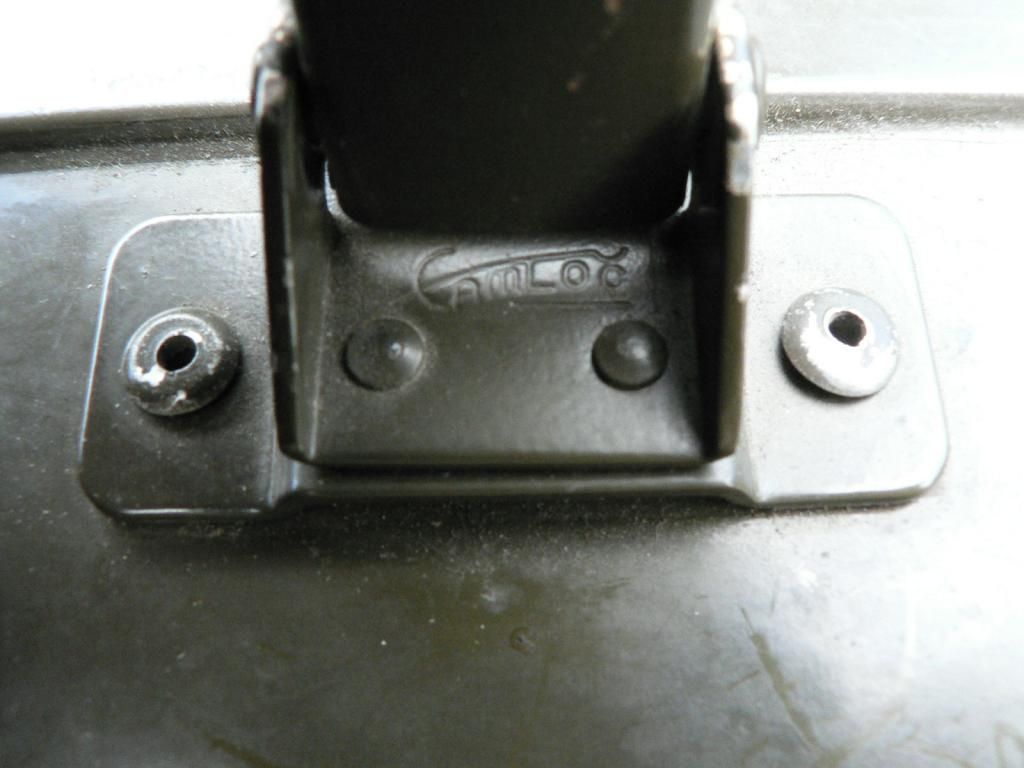
Here's the case opened showing all the goodies inside:

You can see the number "11378" again taped inside the lid and you can also see the part numbers for the foam rubber interior cushions molded into them. There is also a packing diagram/manifest sticker in the top. Let's take a look at that:

On the left are the words "telescope equipment set" (loosely translated) with the part/inventory number for the whole unit below. Below that is a diagram of everything. To the right are four columns. The first is the position noted in the diagram. Next is the number of each item a complete set ships with. Then we have a column telling what each item is. The last column gives the inventory number for each component.
Here's a picture showing the back of the cushion after being removed from the lid:

Printed on a sticker attached to the lid is the part number for the case itself. Hand done in chalk on the back side of the cushion is the serial number that is stamped into the foil identification plate attached to the scope. Don't touch it as it rubs right off (I found this out the hard way). Why these scopes have two numbers identifying them is unknown to me but every one I've seen has this same setup. There must be a reason for it though.
Here's the bottom cushion removed:

And a little stamp on the bottom of the cushion:

Here's a comparison shot of the older Gen0 B8-V on the right and the newer Gen 1 Z-51 on the right:

You can easily see that the cases are very nearly identical between the two units. The older unit has foam inserts while the newer one has molded stuff that holds up better. It's almost rubber and you can tell that it was poured in a mold. I'm sure that there is a common name for the stuff but I can't think of it at the moment. Alright.....tired of looking at cases yet? I know I am. In the next post, , we move onto accessories and mounts but I'm taking a break and I'll get back to this in a bit.

Rear and bottom:


And sides:


Notice the number "11378" on the box. This was printed on paper and then taped on. This same number is stamped on the body of the scope but I have no idea what the small " (9) " means. Also not that both sides have what appears to be a seal which has of course been broken. Here's a close-up of the stamp on one of those seals:

This stamp identifies this unit as having been assigned to Infantry Battalion 232 of the 23rd Mountain infantry Brigade based in Berchtesgaden. Neato!
Here's the latch side of the case. I stacked an older Eltro B8-V unit (the predecessor to the Z51) on top of the one being presented here in order to show that the latches are different but otherwise the cases are nearly identical.

You can see where there used to be a label above the handle that is now missing and there is a small red wire twisted around the handle. I have no idea what it is but it was on there when I got it and it will be on there when it leaves me. You can also see what I think is a pressure relief valve but I don't really know if that's what it is or how it works if it is!
Here are a few close-ups of a latch. They are ingenious little devils made by "Camloc" and are pressure adjustable by screwing the grabber part in or out. The latches on the older case are non-adjustable.




Here's the case opened showing all the goodies inside:

You can see the number "11378" again taped inside the lid and you can also see the part numbers for the foam rubber interior cushions molded into them. There is also a packing diagram/manifest sticker in the top. Let's take a look at that:

On the left are the words "telescope equipment set" (loosely translated) with the part/inventory number for the whole unit below. Below that is a diagram of everything. To the right are four columns. The first is the position noted in the diagram. Next is the number of each item a complete set ships with. Then we have a column telling what each item is. The last column gives the inventory number for each component.
Here's a picture showing the back of the cushion after being removed from the lid:

Printed on a sticker attached to the lid is the part number for the case itself. Hand done in chalk on the back side of the cushion is the serial number that is stamped into the foil identification plate attached to the scope. Don't touch it as it rubs right off (I found this out the hard way). Why these scopes have two numbers identifying them is unknown to me but every one I've seen has this same setup. There must be a reason for it though.
Here's the bottom cushion removed:

And a little stamp on the bottom of the cushion:

Here's a comparison shot of the older Gen0 B8-V on the right and the newer Gen 1 Z-51 on the right:

You can easily see that the cases are very nearly identical between the two units. The older unit has foam inserts while the newer one has molded stuff that holds up better. It's almost rubber and you can tell that it was poured in a mold. I'm sure that there is a common name for the stuff but I can't think of it at the moment. Alright.....tired of looking at cases yet? I know I am. In the next post, , we move onto accessories and mounts but I'm taking a break and I'll get back to this in a bit.




